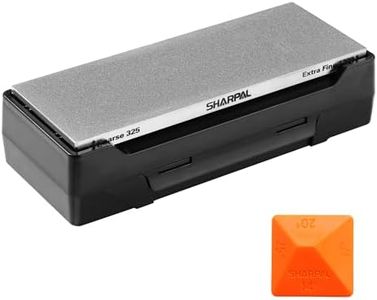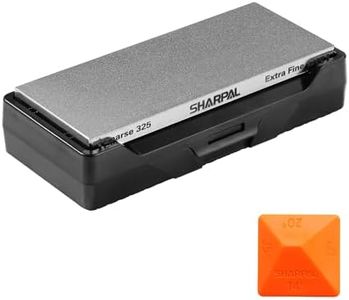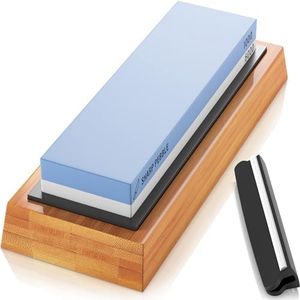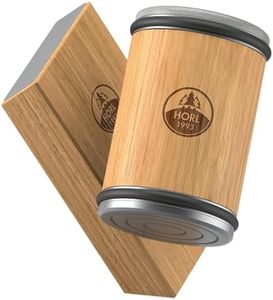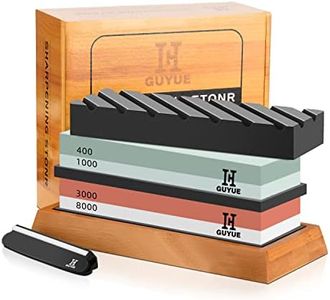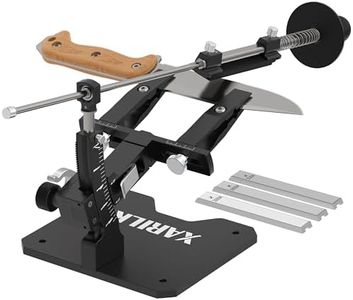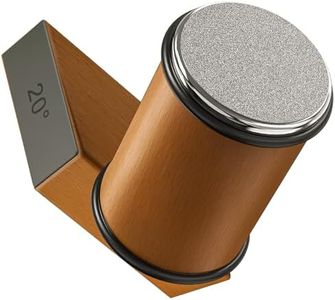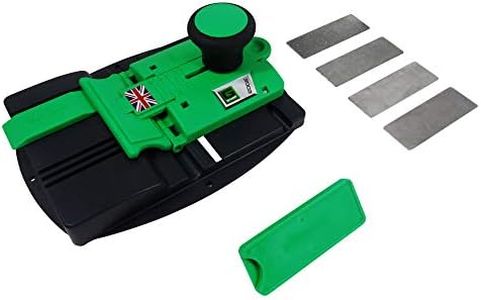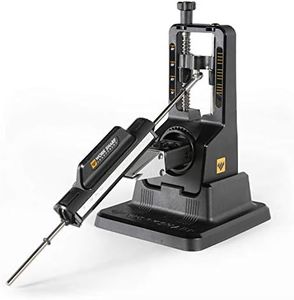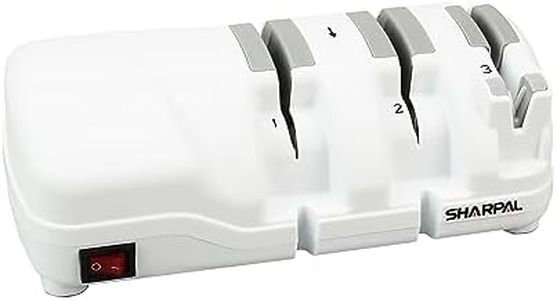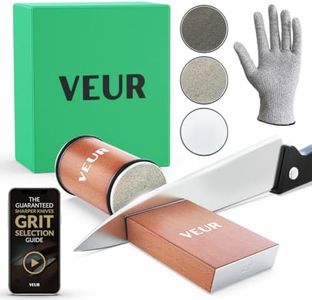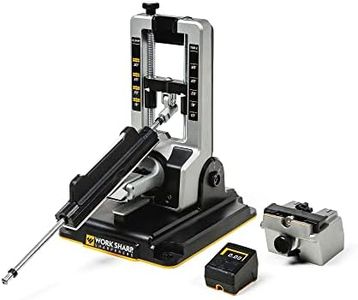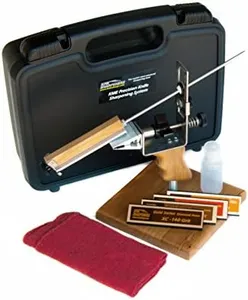We Use CookiesWe use cookies to enhance the security, performance,
functionality and for analytical and promotional activities. By continuing to browse this site you
are agreeing to our privacy policy
10 Best Knife Sharpener Kit
From leading brands and best sellers available on the web.By clicking on a link to a third party's website, log data is shared with that third party.
Buying Guide for the Best Knife Sharpener Kit
Choosing a knife sharpener kit is all about finding the right balance between convenience, effectiveness, and how much control you want over the sharpening process. With so many options available, it’s good to understand the different parts of a kit and how they can match your sharpening needs, whether you’re a home cook, a hobbyist, or someone who just wants reliable sharp knives.Sharpening System TypeThe sharpening system type refers to the method the kit uses to sharpen knives, such as manual stones, guided rod systems, or pull-through sharpeners. Manual stones offer the most control but require some skill, while guided systems help you maintain the correct angle, making sharpening easier for beginners. Pull-through sharpeners are quick and simple but may not give the same quality of edge. Consider how hands-on you want the process to be and whether you value precision or speed when picking a type.
Grit VarietyGrit variety means the range of abrasiveness among the stones or surfaces in the kit, usually measured from coarse to fine. Lower grit numbers (coarse) remove metal quickly and fix dull or damaged edges, while higher numbers (fine) polish and refine the edge. A good kit has multiple grits so you can restore, sharpen, and polish. If you only touch up knives, finer grits are enough, but for complete rejuvenation, you’ll want both coarse and fine options.
Angle GuidesAngle guides help you keep a consistent sharpening angle, which is crucial for creating an effective and long-lasting edge. Some kits include built-in guides or attachments set to common angles, like 15 or 20 degrees. These are helpful for beginners or anyone who wants predictable results. If you sharpen specialty knives or like experimenting, you might want adjustable guides, but for basic kitchen use, fixed guides are often easiest.
Compatibility with Blade TypesCompatibility involves the kit’s ability to handle different knife shapes and sizes, such as chef’s knives, paring knives, or even serrated blades. Some kits are versatile, while others are designed for standard straight-edge blades. Make sure the kit matches the types of knives you own. If you have unusual or specialty knives, look for a kit that clearly states compatibility with those types.
Ease of Use and MaintenanceEase of use and maintenance covers how simple the kit is to set up, operate, and clean after sharpening. Kits with clear instructions, ergonomic holders, and less mess are great for beginners or those who want a fuss-free experience. If you want a speedy or occasional sharpening, prioritize kits that are quick to assemble and easy to maintain. For those who see sharpening as a craft, more advanced systems are worth the learning curve.
